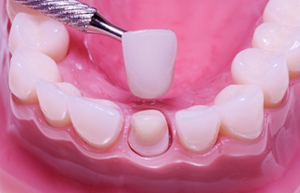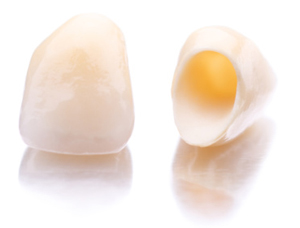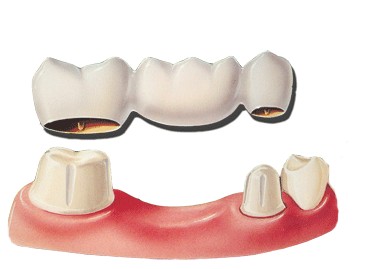
Fixed prosthodontics involves replacement of teeth with a prosthesis that is cemented onto teeth (or for some implants screwed into place through the prosthesis and into the implant). A fixed prosthesis can replace one or more teeth. If a single tooth or implant is restored it is called a crown. If several teeth are replaced, and there are more replacement teeth than anchors (tooth roots or implants) for those replacements, then it is termed a bridge.
Come to TLC Dental for one of the best Prosthodontist in Dwarka. We offer best quality Crowns and Dental Bridges in Dwarka.
What is a Dental Crown?
Before a crown is placed on a natural tooth, the reasons for placement of a crown include a cracked tooth, large filling, excessive wear, and many more. If a tooth is cracked it may continue to split and even require extraction. So a crown is required for a tooth (or implant) to replace the normal form and function of a single tooth. For a natural tooth most of the time there have been one or more fillings placed and the structure and function has been compromised. A buil-up or foundation is required before preparing the tooth for a crown. This is necessary because it is unknown what lies beneath the old filling and a strong foundation allows for a more predictable crown. Then preparation of a dental crown requires removal of enough tooth structure to allow a replacement covering to restore the tooth to normal form and function, and for esthetic areas also the color.


What is a Dental Bridge?
A dental bridge is a combination of artificial teeth, where there are less roots or implants present to replace teeth. The two crowns, now called abutments, hold an artificial tooth, known as a "pontic" in place. The pontic is fused between the two porcelain crowns, which fills in the area left by the missing tooth. This is also known as a fixed bridge. Pontics can be used to replace one or more missing teeth. Fixed bridges, like crowns, cannot be taken out of the mouth as you might do with removable partial dentures. In areas of your mouth that are under stress, such as front teeth, a cantilever bridge might be used. Cantilever bridges replace a single missing tooth but using one or more crown abutments to one side and "hanging" a single pontic off one side, rather than between two or more abutments. Bridges can help correct esthetic problems, some chewing problems and can improve speech. Bridges require a commitment to serious oral hygiene.










